As we pay tribute to the remarkable life and reign of HM Queen Elizabeth II, we look back at 70 fascinating facts about Her Majesty
For more fascinating facts about the late Queen, order a copy of Happy & Glorious, your essential Platinum Jubilee souvenir, which brings Her Majesty’s remarkable story to life through colourful features, lavish images and archive photos.
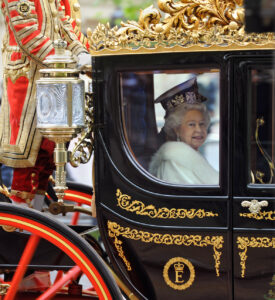
Royal rights & privileges – week one
- The Queen didn’t have a passport. As British passports are issued in her name, she didn’t need to possess one.
- The Queen had two birthdays. Her Majesty was born on 21 April 1926, but she celebrated her ‘official’ birthday in June with the annual Trooping the Colour parade. There is more guarantee of good weather then…
- The Queen was the only person in Britain allowed to drive without a license plate on her car. She didn’t need a driver’s license either, as these were issued in her own name.
- The Queen didn’t have an official surname. Her official title was ‘Elizabeth the Second, by the Grace of God, of the United Kingdom of Great Britain and Northern Ireland, and of her other Realms and Territories Queen, Head of the Commonwealth, Defender of the Faith’. No last name needed.
- Queen Elizabeth could choose Britain’s Poet Laureate, who alongside an annual salary also gets paid with a barrel of sherry. In 2019, Simon Armitage was appointed Poet Laureate and he will serve for ten years.
- According to royal etiquette, when the Queen finished eating, the meal was over.
- The Queen couldn’t vote, but under what is known as royal prerogative, she could dismiss a prime minister.
The Queen on duty – week two
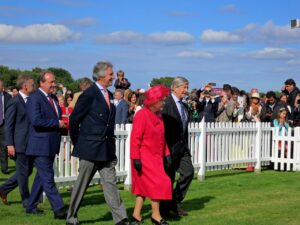
8. The Queen received over 3.5 million items of correspondence over the course of her reign, and sent out over 37,500 Christmas cards over the course of 70 years.
9. Queen Elizabeth sent her first email in 1976, from a British army base.
10. The Queen used her handbag to send signals to her staff. If she switched her handbag from one hand to another, it meant she was ready to wrap up her current conversation.
11. The Queen was known for wearing brightly coloured ensembles for official events. This is so that she could always be seen from the crowd.
12. The Queen sat for 129 portraits during her reign.
13. Princess Elizabeth made her first radio broadcast in October 1940, during the Second World War.
14. The Queen made at least 260 official overseas trips since taking the throne. You can read a timeline of Her Majesty’s reign here.
The Queen in private – week three
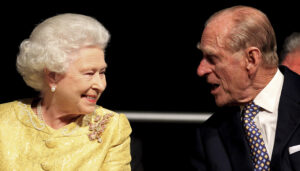
15. The Queen was an Arsenal fan. Although in her position as monarch she had to be above politics, that didn’t stop her from having a favourite football team…
16. The Queen spoke fluent French.
17. The Queen only carried cash in her purse on Sundays, when she donated money to her church.
18. The Queen wore the same nail polish since 1989. She wore Essie’s classic pale pink shade, Ballet Slippers.
19. Her Majesty had a famously fun sense of humour, and was reportedly able to imitate the sound of a Concorde jet landing.
20. The Queen only ever gave one sit-down interview, with the BBC in 2018, and was dubbed ‘Elizabeth the Silent’ by historian David Starkey.
21. The Queen and her sister Princess Margaret went out incognito to join the celebrations of the end of the Second World War on 8 May 1945.
The Queen’s love of animals – week four
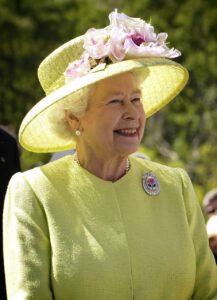
22. The Queen’s love of horses began at the age of four when she was given her first pony, a Shetland named Peggy, by her grandfather King George V.
23. The Queen was gifted an assortment of rare animals during her reign, including an elephant, a jaguar and a pair of beavers. Whenever she was given a rare animal she donated it to London Zoo.
24. The Queen owned all of the unmarked swans in the UK. During the annual ‘Swan Upping’, the official royal Swan Marker counts all the swans along a portion of the River Thames.
25. The Queen owned around 200 racing pigeons.
26. The Queen bred horses, and had about 25 horses training at the royal studs every season.
27. The Queen loved corgis and owned 30 during her time as monarch. The Queen was also the accidental owner of a ‘dorgi’, when one of her corgis mated with Princess Margaret’s Dachshund, Pipkin.
28. The Queen’s racing colours were a purple body with gold braid, scarlet sleeves and black velvet cap with gold fringe.
The Queen’s Wedding – week five
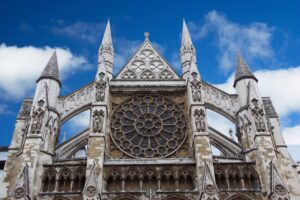
- There were 10,000 encrusted pearls on the Queen’s wedding gown, designed by Sir Norman Hartnell; the design was approved less than three months before the wedding.
- The Queen’s tiara snapped on her wedding day and the court jeweller had to be summoned immediately to repair it. Luckily it was fixed in time for the ceremony.
- The Queen paid for her wedding dress with ration coupons, as the country was still recovering from the Second World War. She saved up her own coupons and received 200 from the government to pay for her iconic wedding dress. Hundreds of people sent the Princess their coupons, but they had to be returned as it would have been illegal to use them.
- The wedding took place just four months after the engagement was announced.
- Before the wedding, Prince Philip was created The Duke of Edinburgh, Earl of Merioneth and Baron Greenwich of Greenwich in the County of London.
- The bridal bouquet consisted of white orchids and included a sprig of myrtle, a tradition that was started by Queen Victoria. The day after the wedding, the bouquet was sent back to Westminster Abbey where it was laid on the Tomb of the Unknown Warrior, another royal tradition.
- The wedding ring was made from a nugget of Welsh gold from the Clogau St David’s mine, near Dolgellau.
The Queen as head of the Royal Family – week six
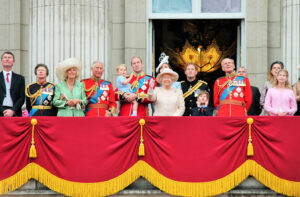
36. Queen Elizabeth had 30 godchildren, from Princess Diana’s brother to the Crown Prince of Yugoslavia.
37. Queen Elizabeth and her husband Prince Philip were third cousins.
38. The Duke of Edinburgh affectionately called his wife, the Queen, ‘cabbage.’
39. The Queen had eight grandchildren and 12 great grandchildren.
40. As well as being the longest-serving monarch in British history, the Queen was also the longest-married monarch, having been married to Prince Philip for 73 years.
41. The Queen holidayed in Balmoral in the Scottish Highlands every summer, and many of the Royal Family would join her.
42. The Royal Family exchange presents on Christmas Eve, in keeping with the family’s German heritage, and are said to give each other joke presents rather than lavish items.
The Queen in history – week seven
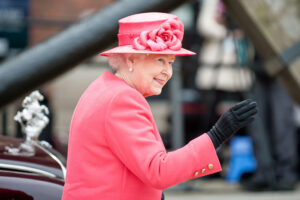
43. There were six Roman Catholic Popes during the Queen’s 70-year reign.
44. The Queen saw 14 different British prime ministers come into power during her time as monarch, from Winston Churchill to Boris Johnson.
45. The Queen was the first British monarch to visit China, paying a visit to the country in 1986.
46. 39 monarchs preceded Queen Elizabeth since William the Conqueror in 1066.
47. The Queen reigned for so long that 4/5 of UK residents were not alive when she ascended the throne.
48. In 1969, the Queen, along with other world leaders, sent messages of goodwill to the moon. These were transferred onto a silicone disc, which still sits on the moon’s surface today.
49. During her visit to Australia in 1970, the Queen set a precedent of the royal ‘walkabout’, shaking hands with the public rather than appearing at a distance, changing the way official visits were conducted.
Life at the Palace – week eight
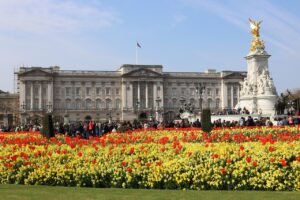
50.The Queen hosted an average of 50,000 people at Buckingham Palace every year at receptions, banquets and garden parties – that’s an awful lot of washing up!
51.The Queen drank a glass of champagne every night before bed.
52.There is a private ATM in the basement of Buckingham Palace.
53.The Queen’s breakfast table was laid with cereals – she reportedly favoured Special K – in Tupperware containers.
54.The Queen was not a fan of garlic, and so garlic is one thing you’ll never see on the menu at Buckingham Palace.
55. Buckingham Palace was bombed in the Second World War while King George VI and the Queen Mother were in residence, on September 13, 1940.
56. Buckingham Palace’s clockmaker maintains over 350 clocks and watches, while two horological conservators wind the clocks at the Palace every week.
The young Princess
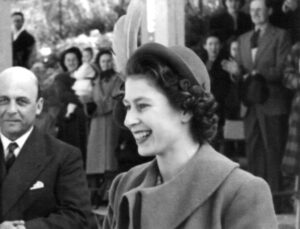
57. Princess Elizabeth was evacuated to Windsor Castle with her sister Margaret during the Blitz.
58. The Queen became a homeowner at just six years old, when the people of Wales gifted her a house in the grounds of Windsor’s Royal Lodge. It was named Y Bwthyn Bach, which means ”little cottage”.
59. Outdoorsy Princess Elizabeth started her survival-skills training as a Girl Guide. She was also a Sea Ranger as a teenager.
60. Princess Elizabeth first met Philip Mountbatten, later her husband, when she was just eight years old.
61. The Queen is a fully trained mechanic, having signed up to the Women’s Auxiliary Territorial Service, and worked as a mechanic and truck driver during the Second World War.
62. The place where the Queen was born, 17 Bruton Street in Mayfair, is now a Chinese restaurant.
63. The Queen used the London Underground for the first time in May 1939, accompanied by her sister Princess Margaret and her governess Marion Crawford.
The Coronation
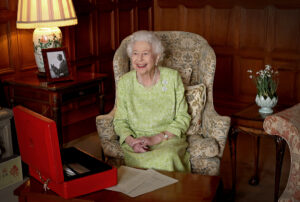
- The Queen’s coronation on 2 June 1953 was televised to 27 million viewers around the world.
- 8,251 guests were invited to the Coronation.
- The Coronation ceremony – in six parts, the recognition, the oath, the anointing, the investiture (including the crowning), the enthronement and the homage – lasted almost three hours.
- The Anointing Oil – used to anoint the Queen at one of the most sacred parts of the ceremony – contains oils of orange, roses, cinnamon, musk and ambergris.
- Prince Charles was the first child to witness his mother’s Coronation, and received a special hand-painted invitation to the ceremony. Princess Anne did not attend as she was thought to be too young.
- The Imperial State Crown, which was worn by the Queen after the ceremony during her return to Buckingham Palace, contained four pearls traditionally believed to have been Elizabeth I’s earrings.
- The Queen was crowned in St Edward’s Chair, made in 1300 for Edward I and used at every Coronation since that time.
Platinum Jubilee Souvenirs
Here at BRITAIN, we couldn’t let such an important royal occasion go by without an appropriate fanfare, so we are offering you the chance to purchase your own Limited Edition Platinum Jubilee mug, designed by Susan Rose China.
There are three different sizes and designs on offer, each hand-drawn and each inspired by the life and service of Her Majesty The Queen.
Buy your Platinum Jubilee mug here.
Read more:
10 of our favourite anecdotes about Her Majesty The Queen.

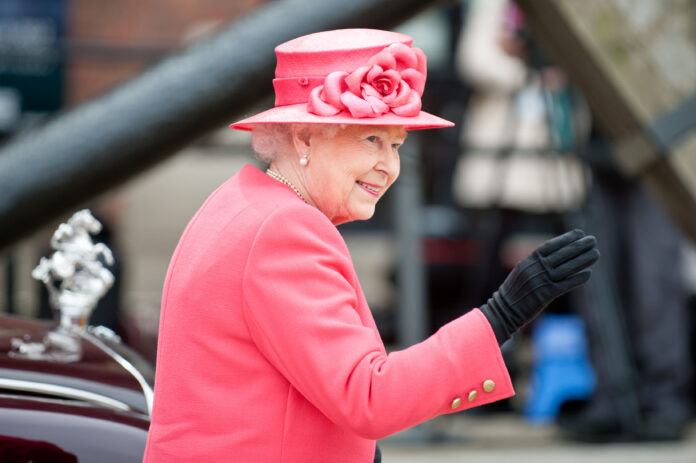




 © 2024
© 2024